The document discusses the ZED Mariel project in Cuba which aims to develop a special economic zone. Key points:
- ZED Mariel will cover 465km2 in Artemisa province near Havana and include a modern container terminal, infrastructure development, and land for industry, energy, tourism and real estate projects.
- The project represents Cuba's approach to attract $3 billion annually in foreign direct investment as it modernizes its economy.
- Cuba has good international relationships and is well positioned geographically to become a hub for the Americas, leveraging its educated workforce and cultural attractions.
- Recent diplomatic changes including restored US-Cuba relations are improving Cuba's economic opportunities and outlook. Z
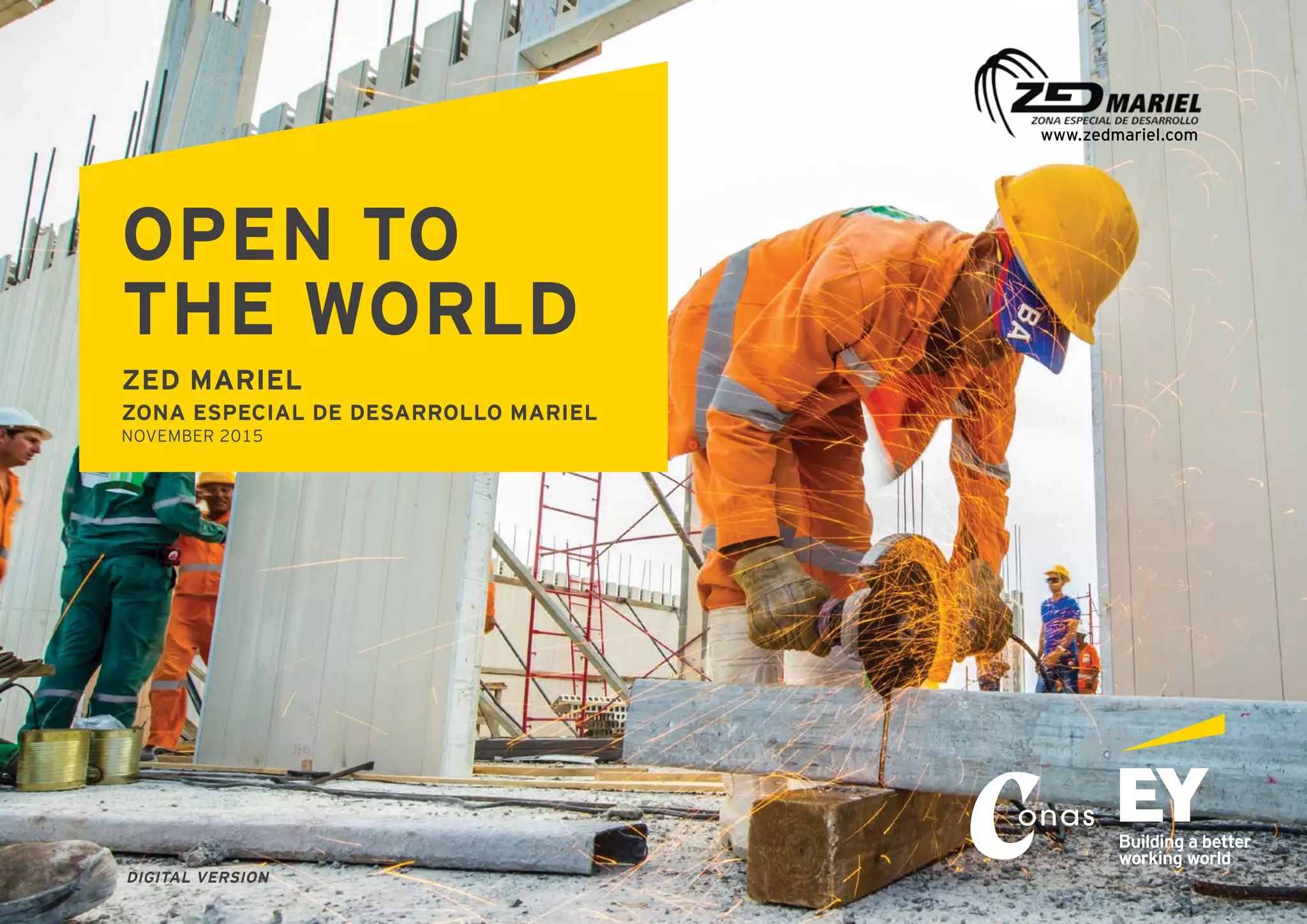
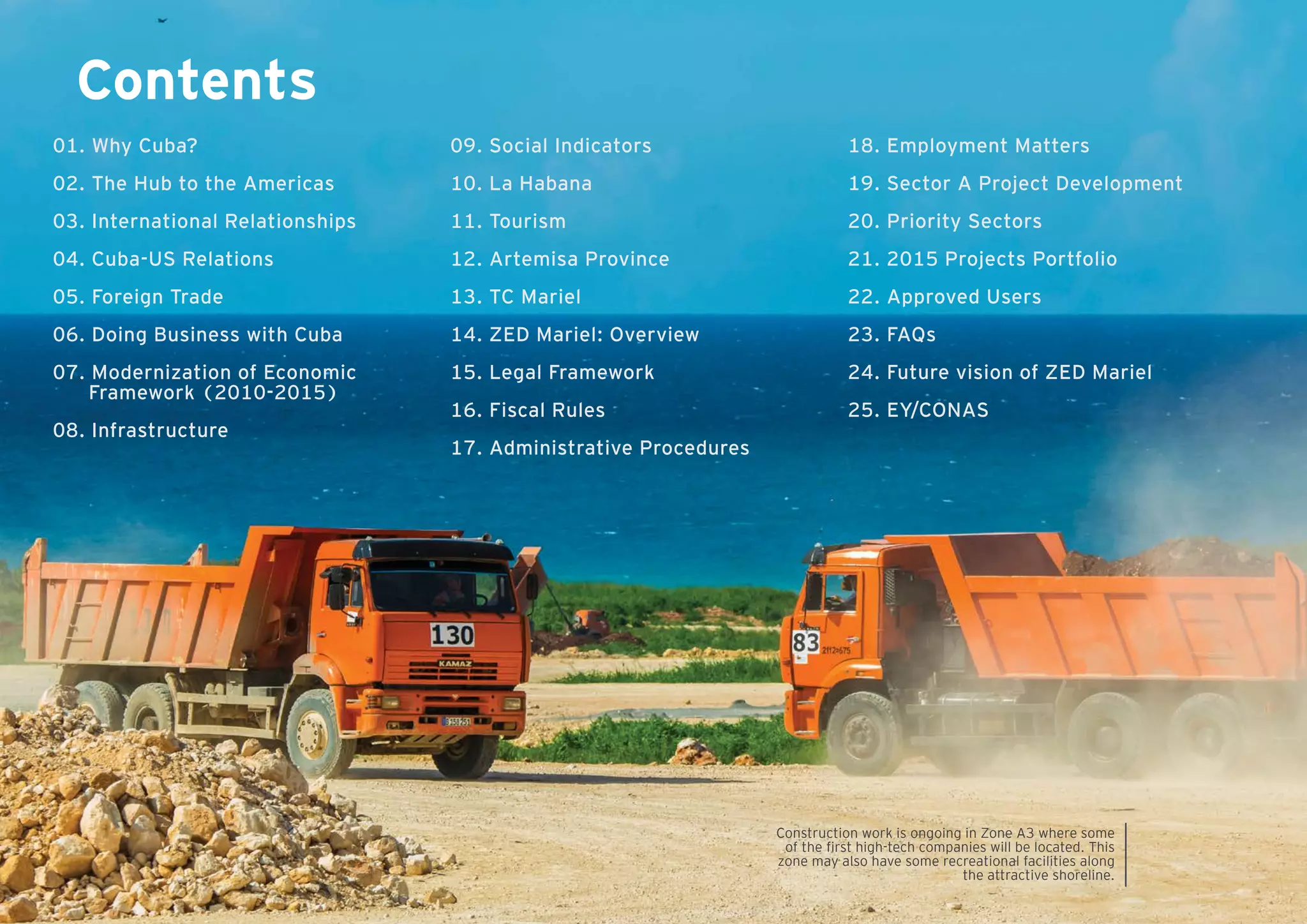


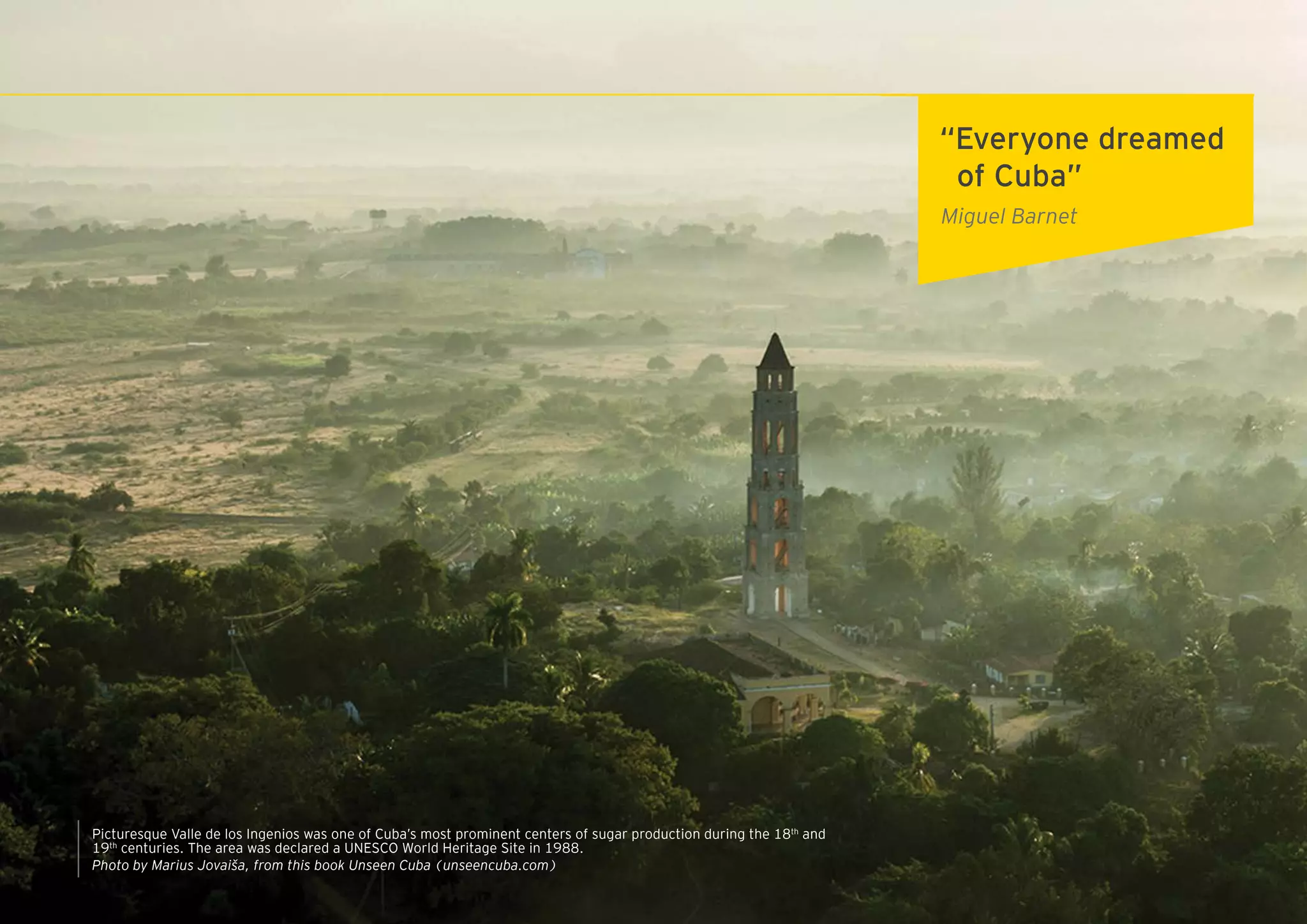


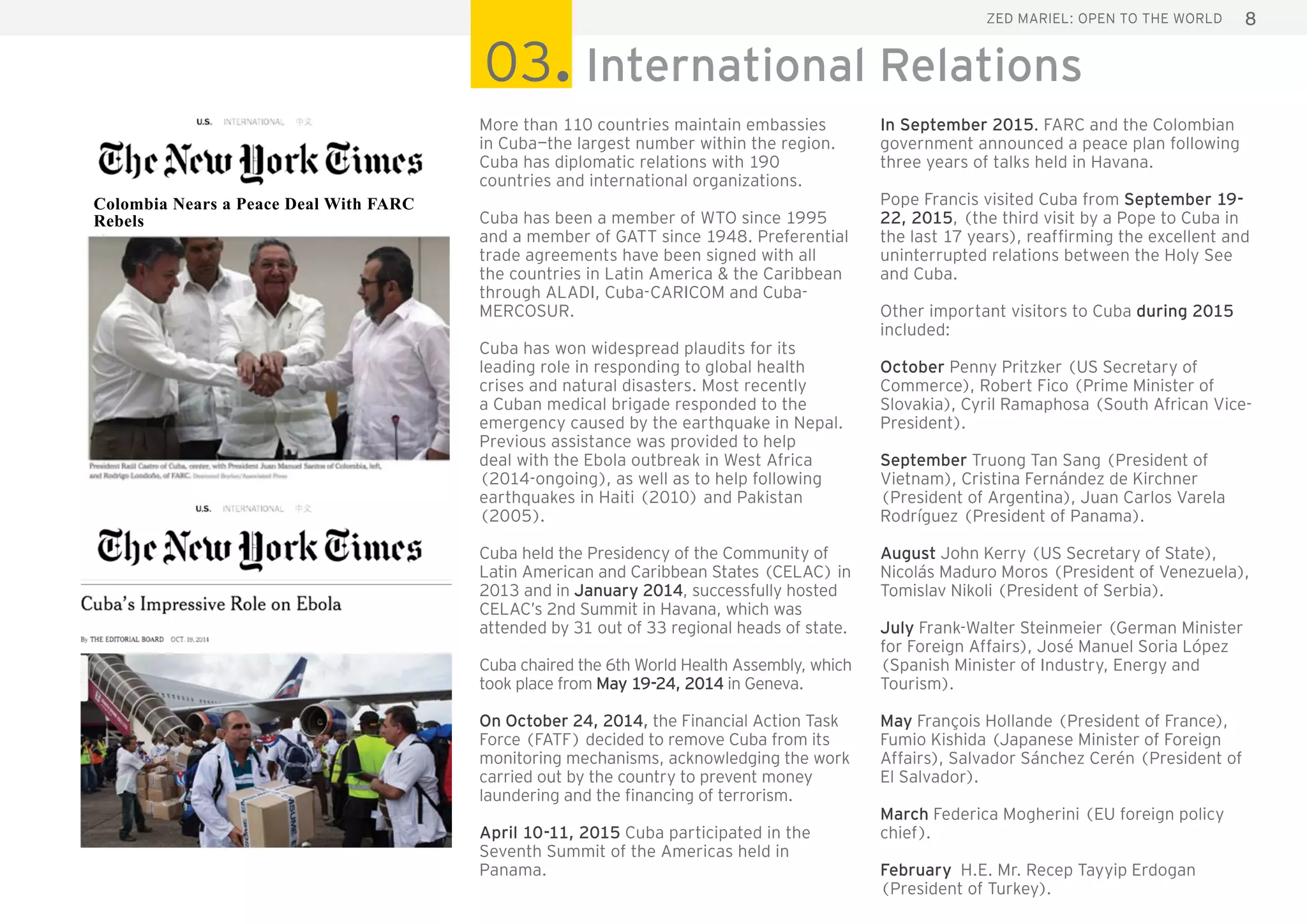






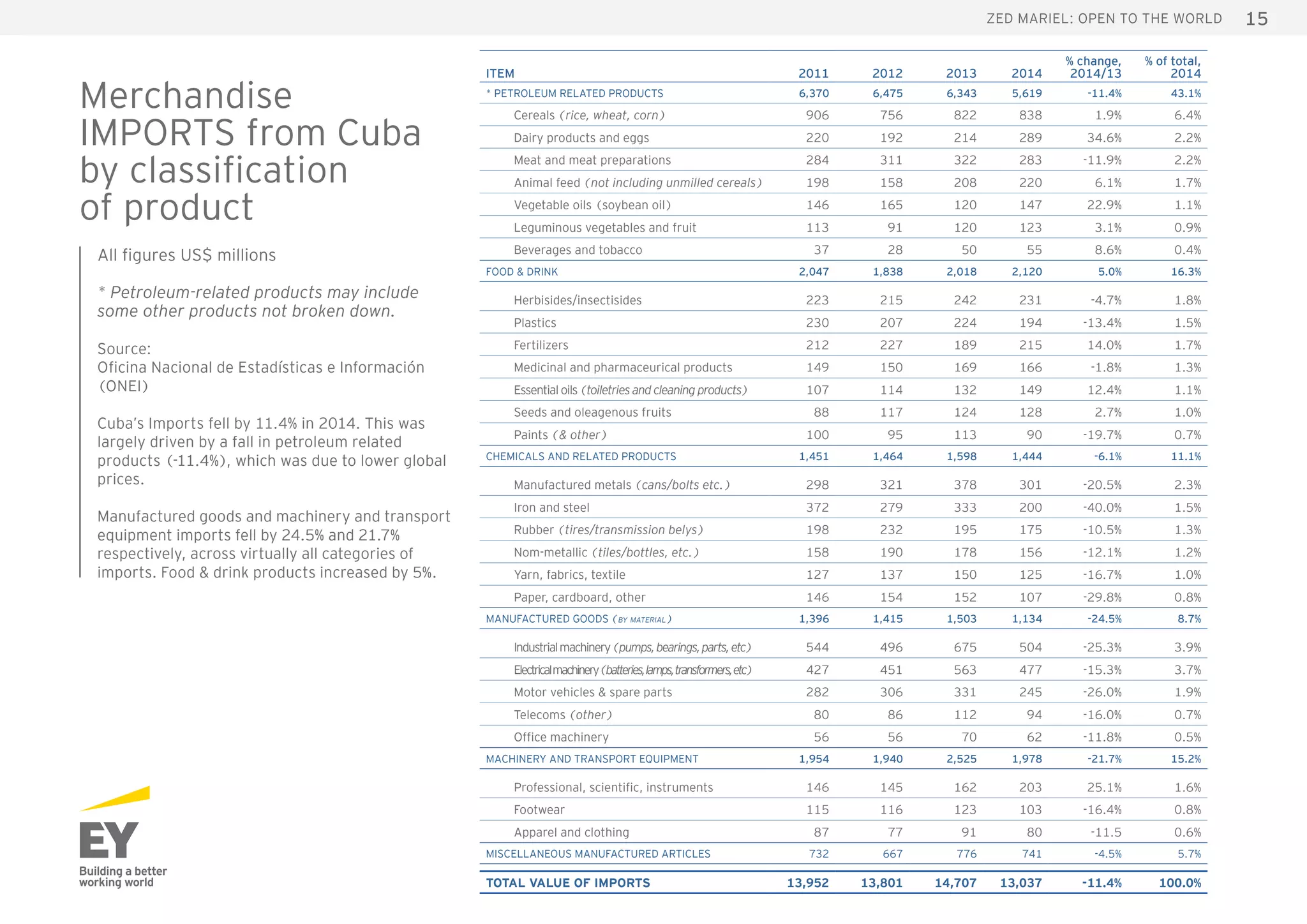
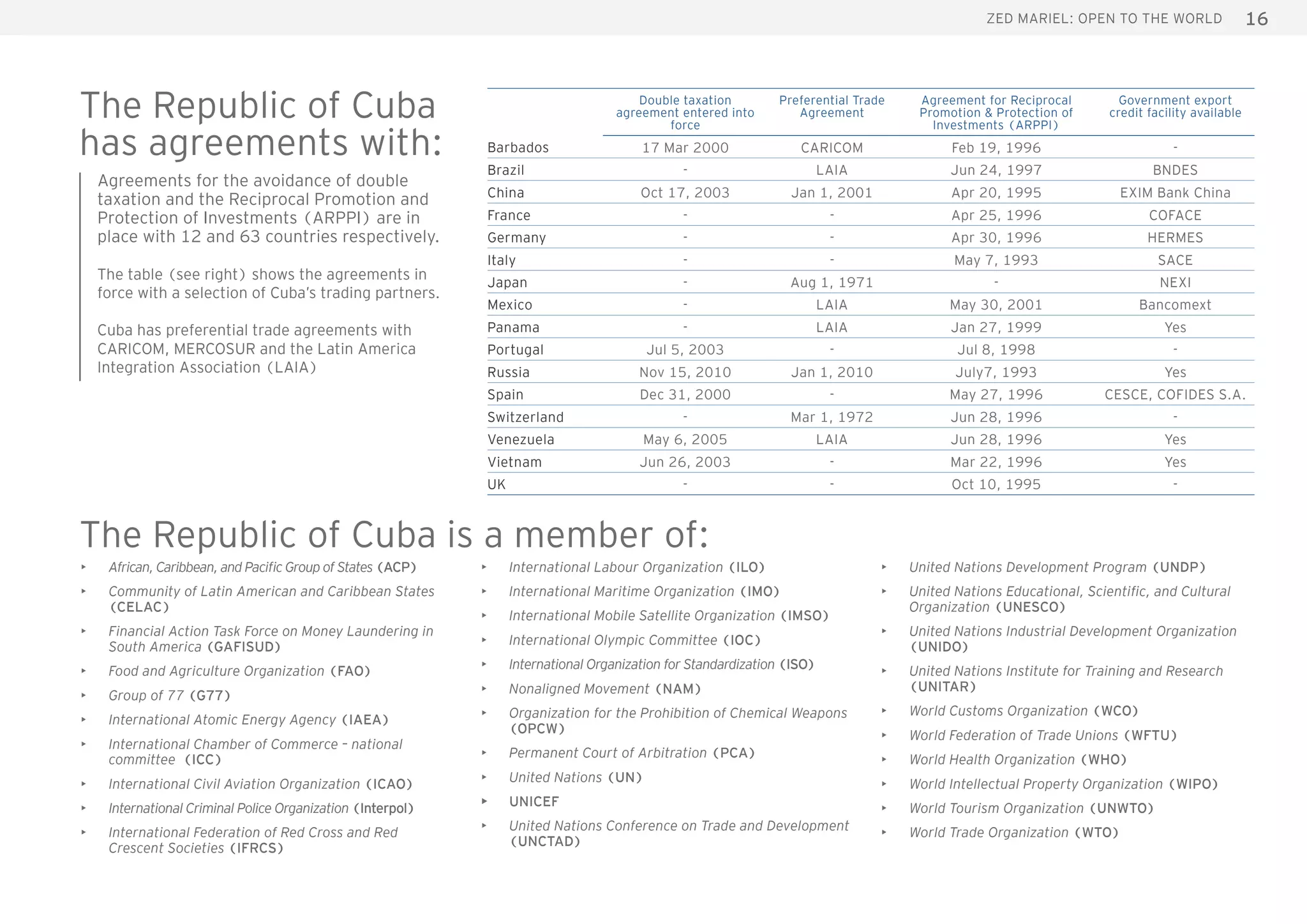


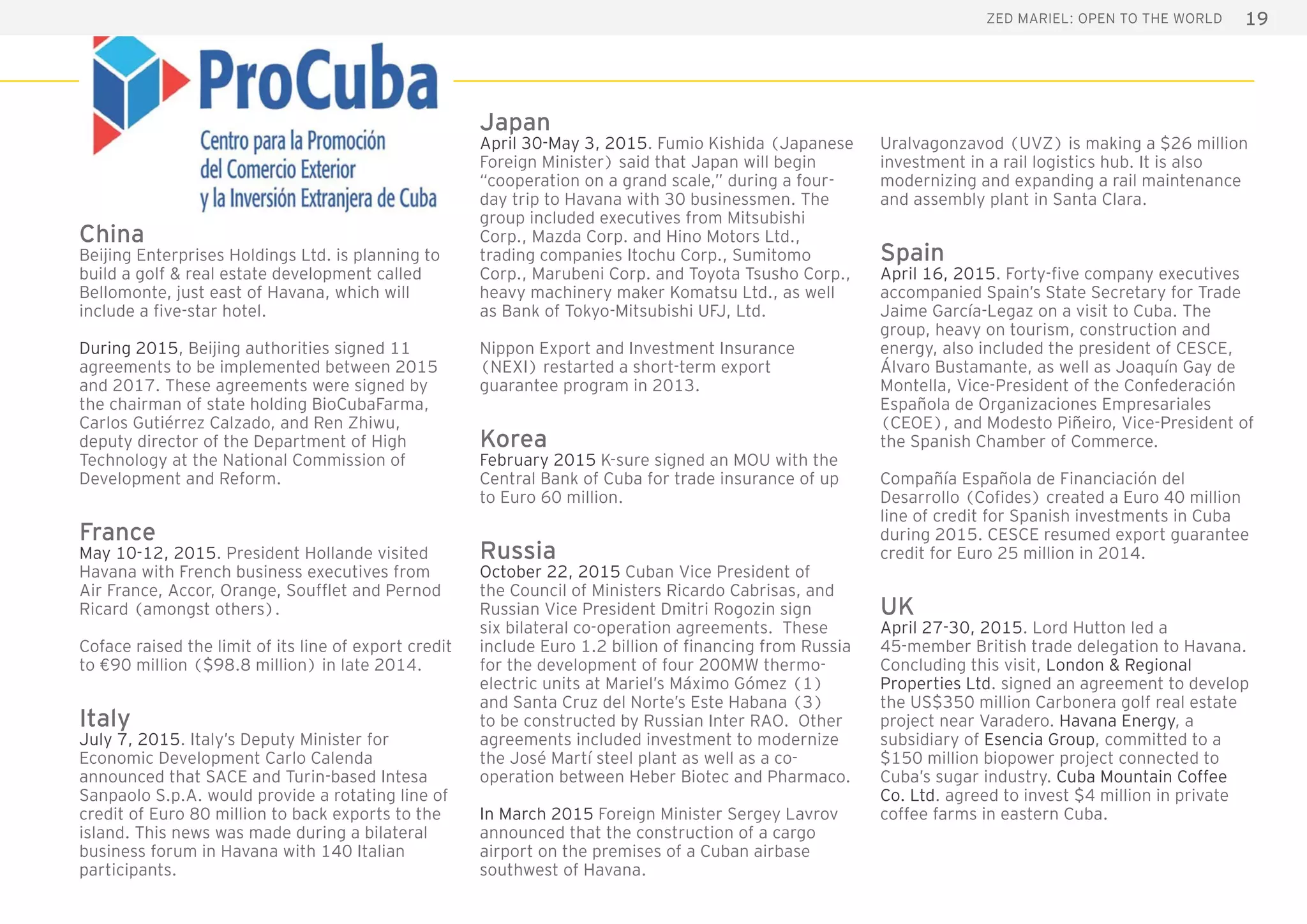




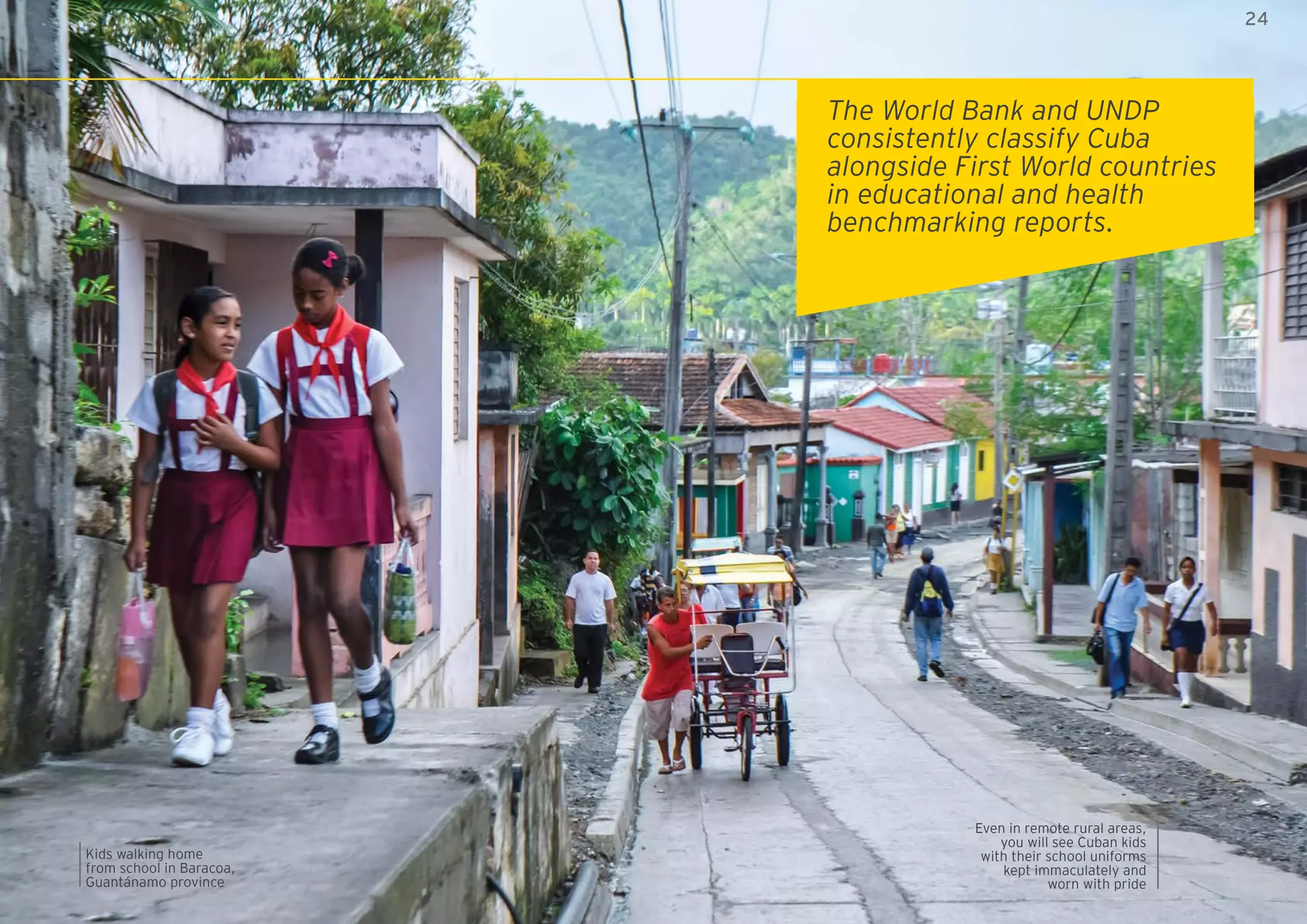



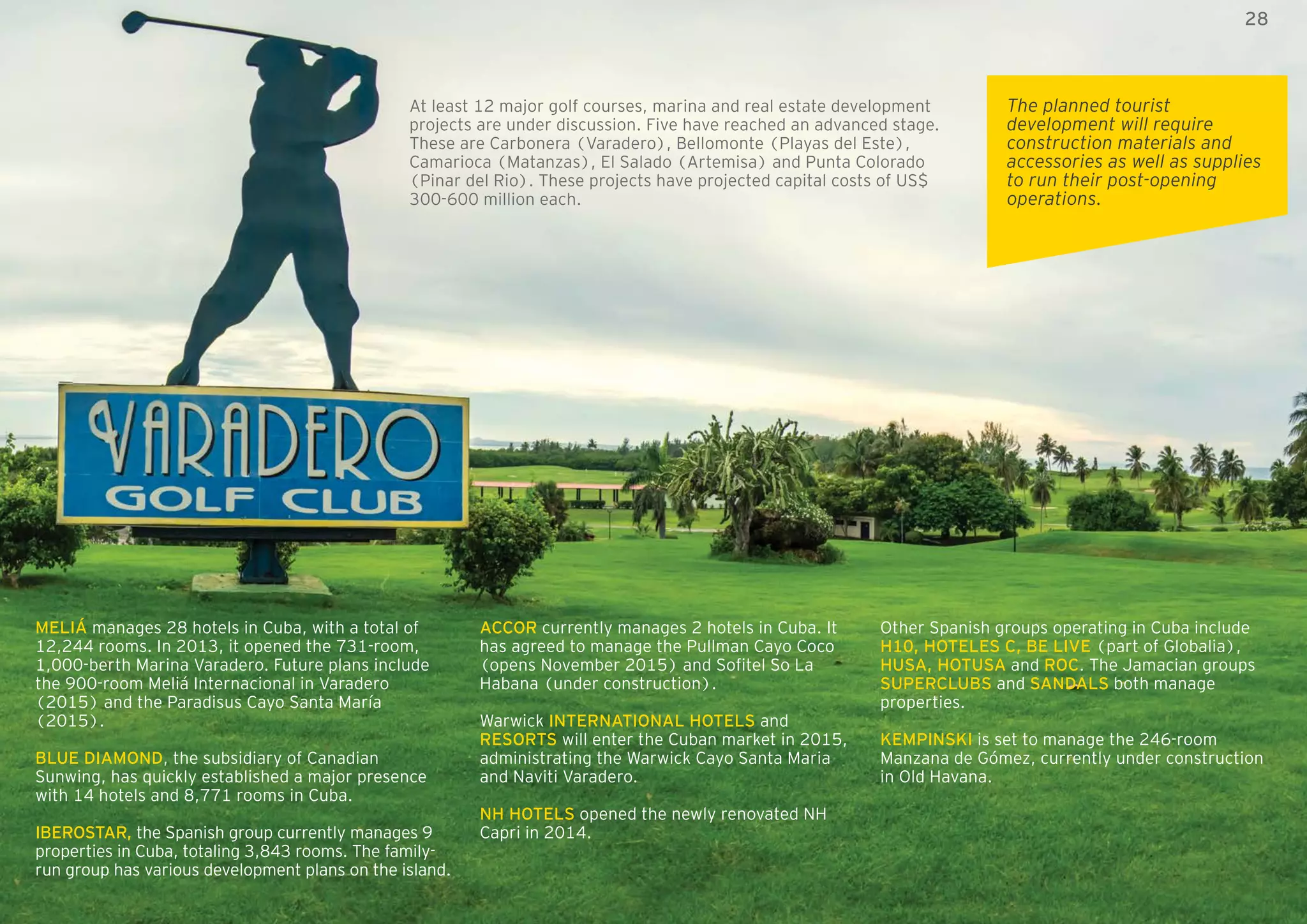






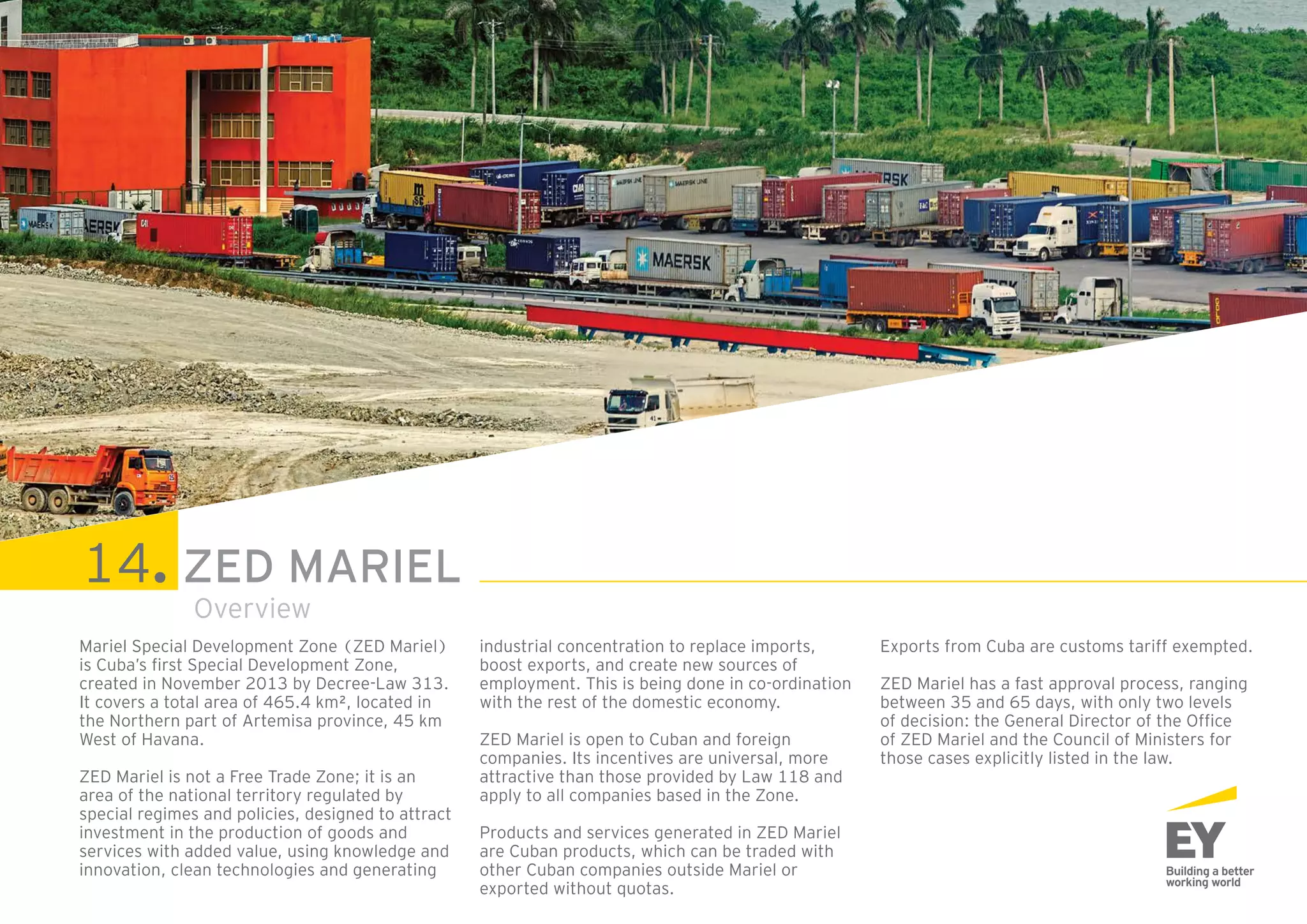
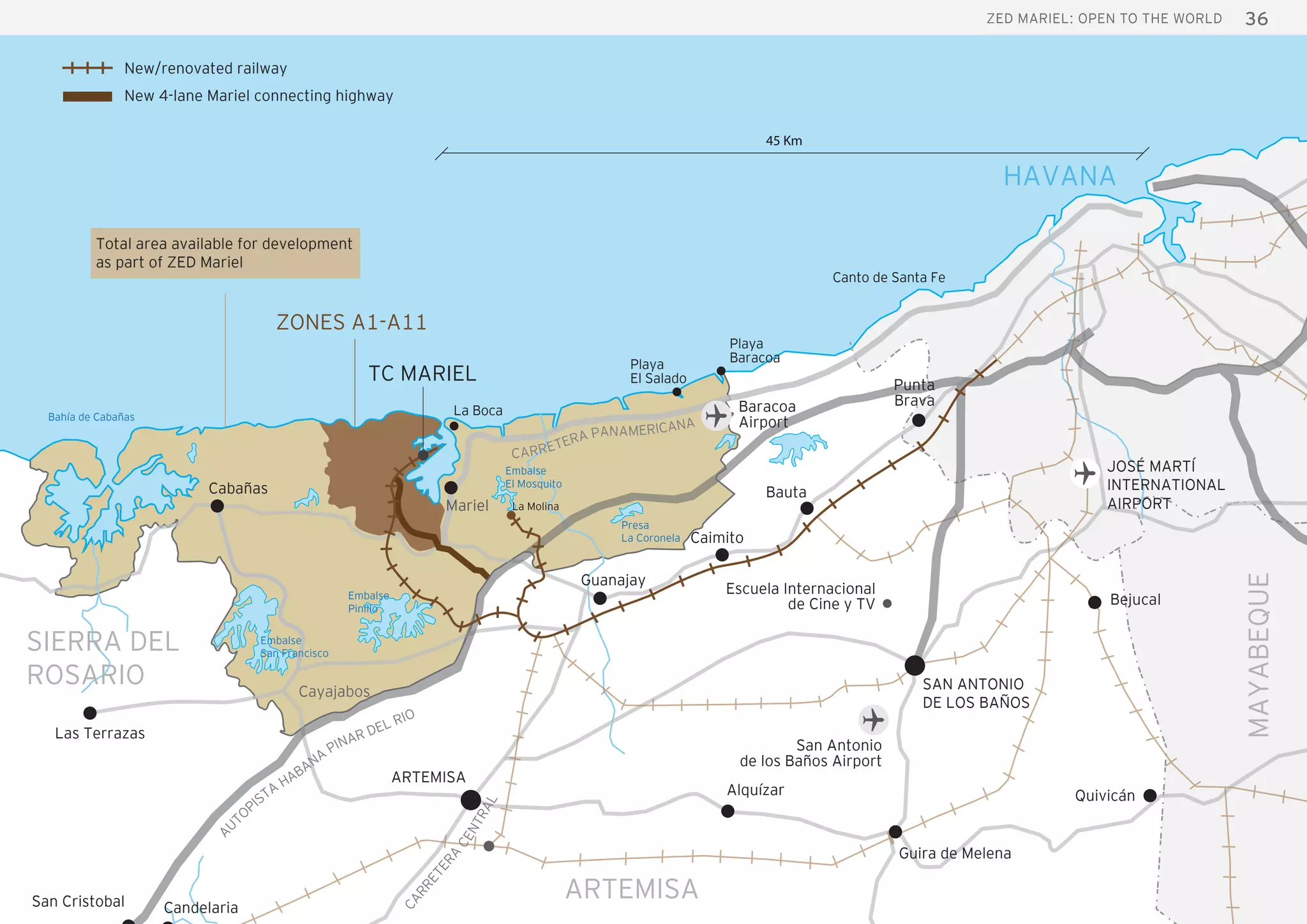


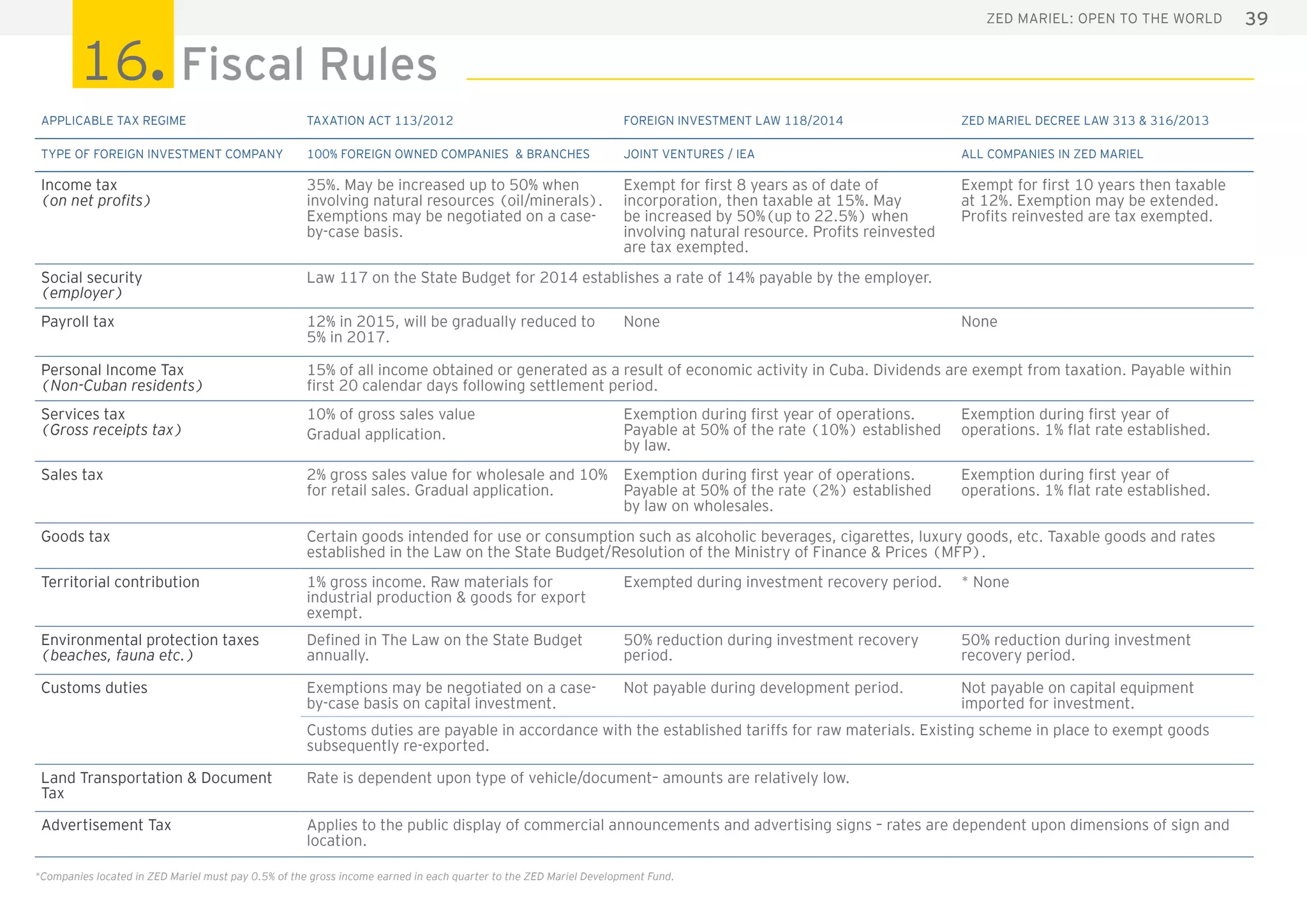
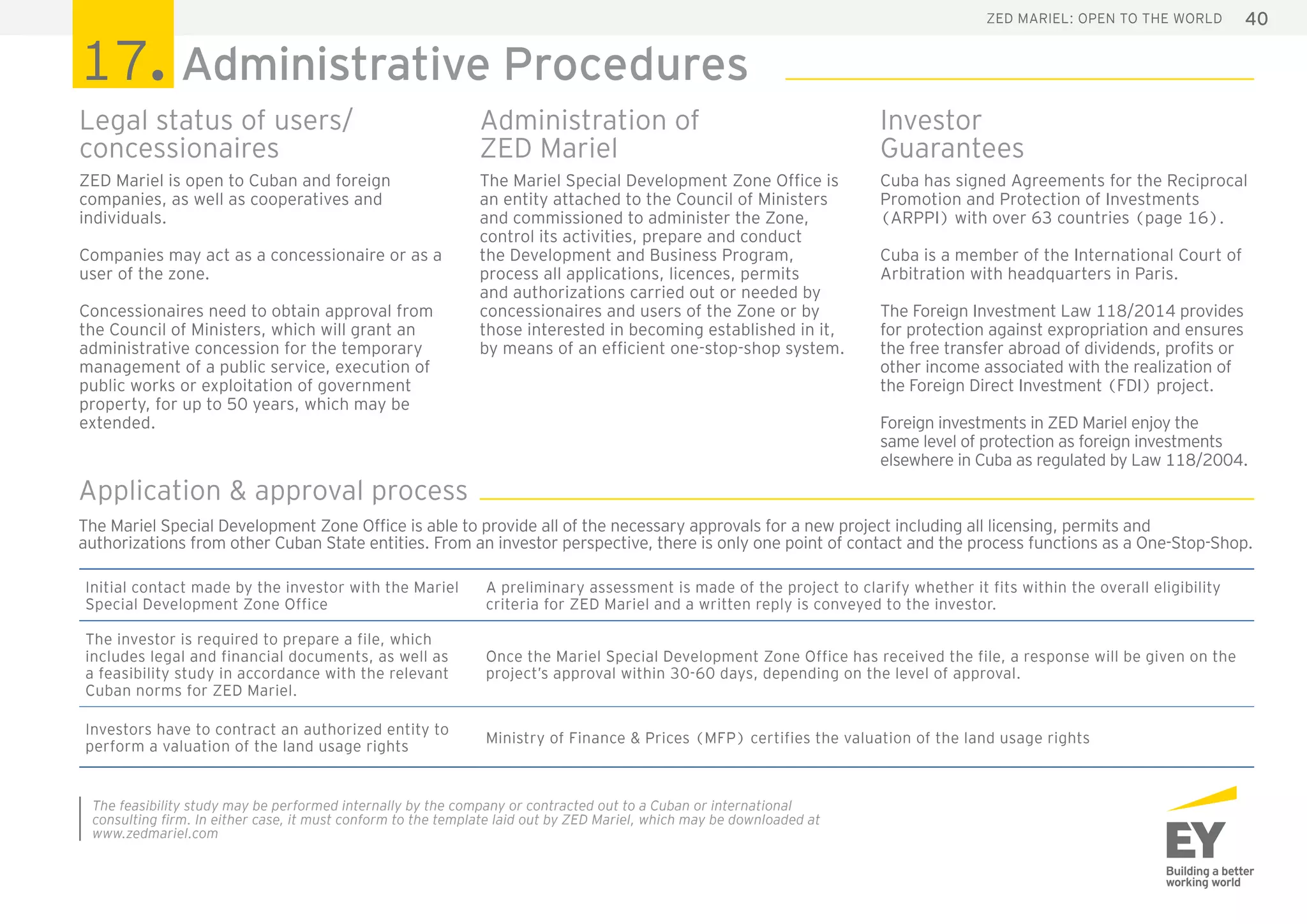

![42ZED Mariel: open to the world
Employment Agency Main professions available Contact
Almacenes Universales S.A. Professional, technician and skilled worker in the field of logistics (warehousing, transportation
and port activities)
Desamparados No. 166 e/ Habana y Compostela,
La Habana Vieja, La Habana
Tel: 7-861-3402 ext. 131-178
mail: dtor.ae@cnph.ausa.cu
AGEMPORT
[Ministry of Transport]
Mechanic, driver, heavy/light equipment operator, industrial maintenance technician/worker,
technologist, painter, sheet-metal worker, assistant.
Desamparados No. 201 esquina a Compostela, La
Habana Vieja, La Habana
Tel: 7-862-1940, 7-862-1909, 7-862-1935
mail: ee.transporte@agemport.transnet.cu
BIOCUBAFARMA
[Biotechnology and Pharmaceutical Industry]
Chemical & industrial engineer, pharmacy, chemistry, biology and microbiology professionals,
technicians in biological processes, industrial chemistry and industrial pharmacy technicians.
100 y Boyeros, Edificio B, Boyeros, La Habana
Tel: 7-265-3749
mail: rhmariel@oc.biocubafarma.cu
CUBATABACO
[Ministry of Agriculture]
Skilled agricultural worker, and technician and engineer in any field. Calle Nueva No. 72, e/ Universidad y Pedroso, Cerro.
Tel: 7-879-0250 to 7-879-0256
mail: cubatabaco@cubatabaco.cu
CUBARON
[Food Industry]
Chemical engineer and professional; microbiology, biology and food science professional; food
technology technicians.
Calle 22 No. 310 y 312 e/ 3ra y 5ta, Miramar, Playa
Tel: 7-204-2427, 7-204-6231, 7-204-2566
mail: empleadoramariel@cubaron.co.cu
DELTA
[Ministry of Communications]
IT engineer, telecommunications engineer, IT professional, cybernetics and mathematics
professional, IT technician
Neptuno, No. 108 e/ Prado y Consulado. Centro Habana
Tel: 7-863-6495, 7-862-9300 ext. 105 y 230
mail: empleadora@delta.co.cu
MICONS
[Ministry of Construction]
All occupations in the field of construction (construction, assembly, design and construction
materials) in addition to other occupations linked to other fields
Factor No. 5, e/ Masó y Ayestarán, Cerro, La Habana
Tel: 7-879-9567 or 7-879-9614
mail: empleadora@netcons.com.cu
PETROEMPLEO
[Oil Industry]
Assistant in all oil-related activities, technician in oil refining processes, oil well supervisor,
oil treatment professional, technician in drilling fluids, drilling experts, oil extraction worker,
drilling logistics expert, turbine repairman
Massip No. 14 206 e/ San Francisco y Vía Blanca,
Guanabacoa, La Habana
Tel: 7-784-1154, 7-699-2749, 7-699-2743
mail: zedm-petroempleo@pech.cupet.cu
SIECSA
[Unión Eléctrica]
Electric, mechanic and automation engineer, as well as the entire technical and managerial staff
required operating and maintaining solar parks, wind farms and any other power generating
facility connected to the grid.
Calle N, Edificio ENE, 8vo piso, e/ 21 y 23, El Vedado, La
Habana
Tel: 7-839-7700 ext. 6204 or 6200, 7-831-8473
mail: empleadora.une@siecsa.cu
TECNOSIME
[Ministry of Industries]
Manager, technician and skilled worker in industrial processes Calle 36 A No. 712 e/ 7ma y 42 Miramar, Playa, La
Habana.
Tel: 7-202-1344 ext. 117 and 7-206-5644
mail: tecnosime@tecnosime.cu
EMPLEATUR
[Ministry of Tourism]
Duly trained personnel in all technical aspects, with working knowledge of the required
languages to work in hotel and restoration activities.
Calle D No. 520 e/ 21 y 23, El Vedado, Plaza de la
Revolución, La Habana (Margarita Rodríguez Infiesta)
Tel: 78333024 and 78364715
mail: empleatur@fintchab.fintur.tur.cu](https://image.slidesharecdn.com/ba9d78ca-2941-4ec9-a1da-caa871872d20-151224160752/75/EY-Cuba-Presentation-ZED-Mariel-Open-to-the-World-Nov-2015-42-2048.jpg)


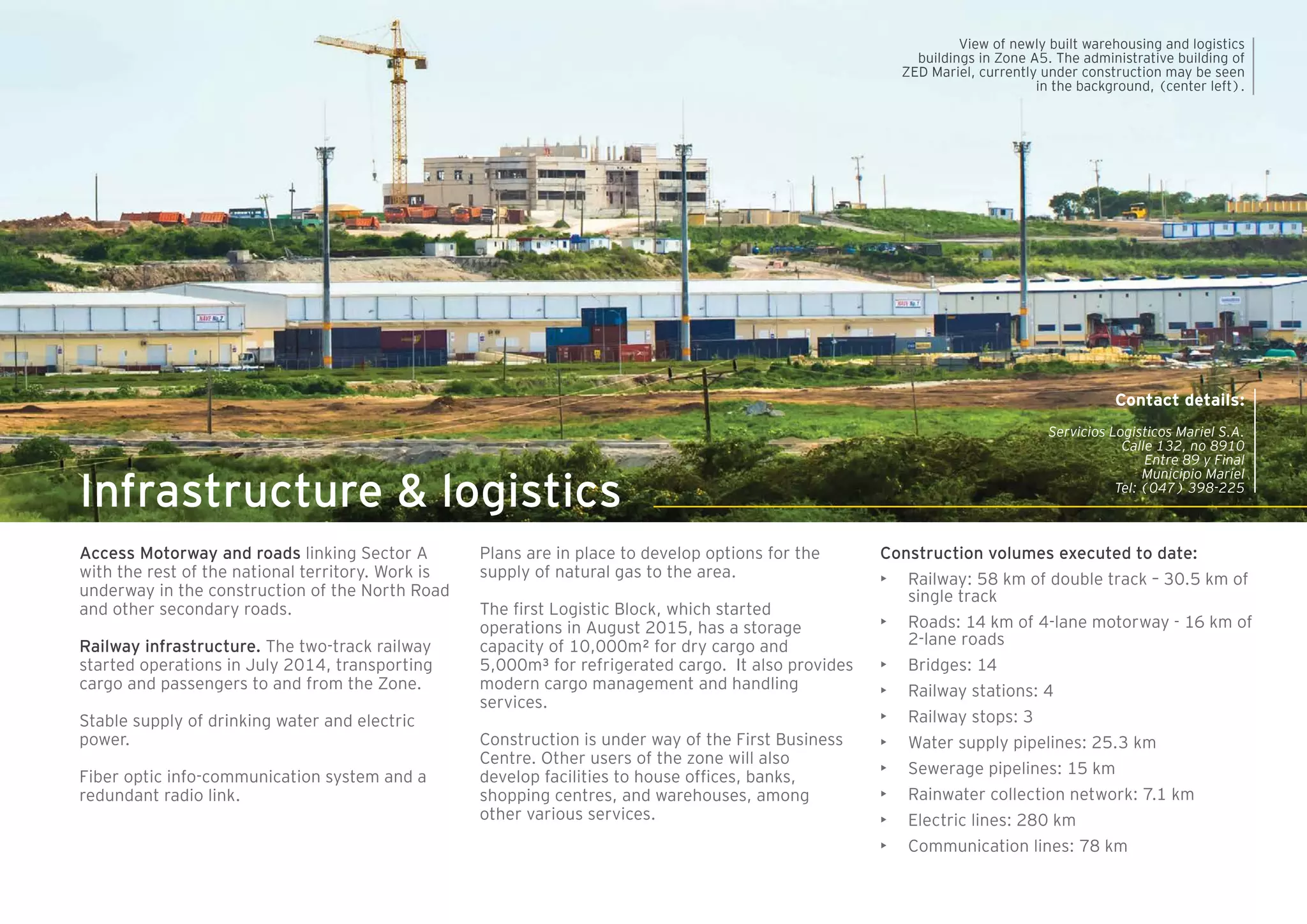
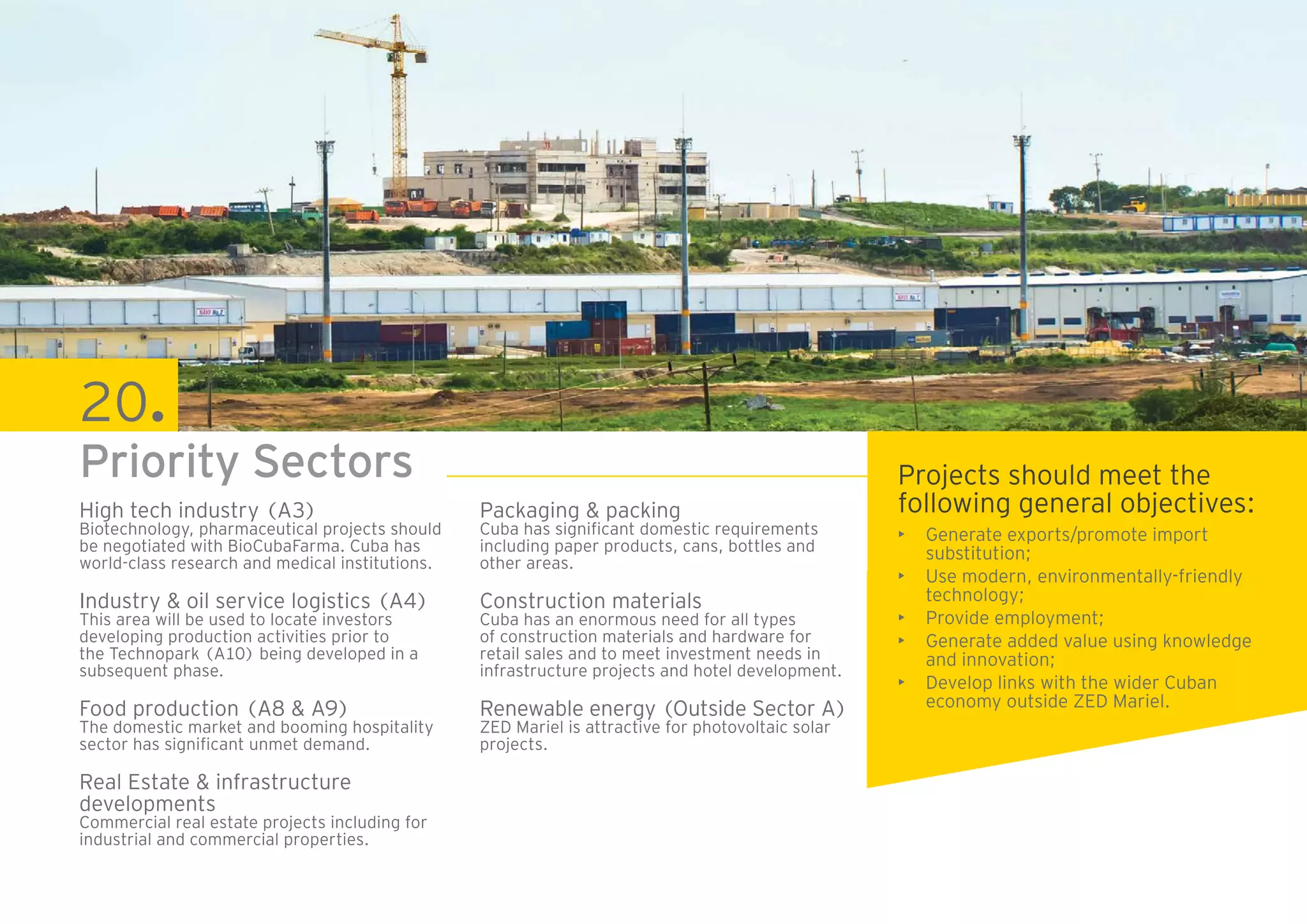
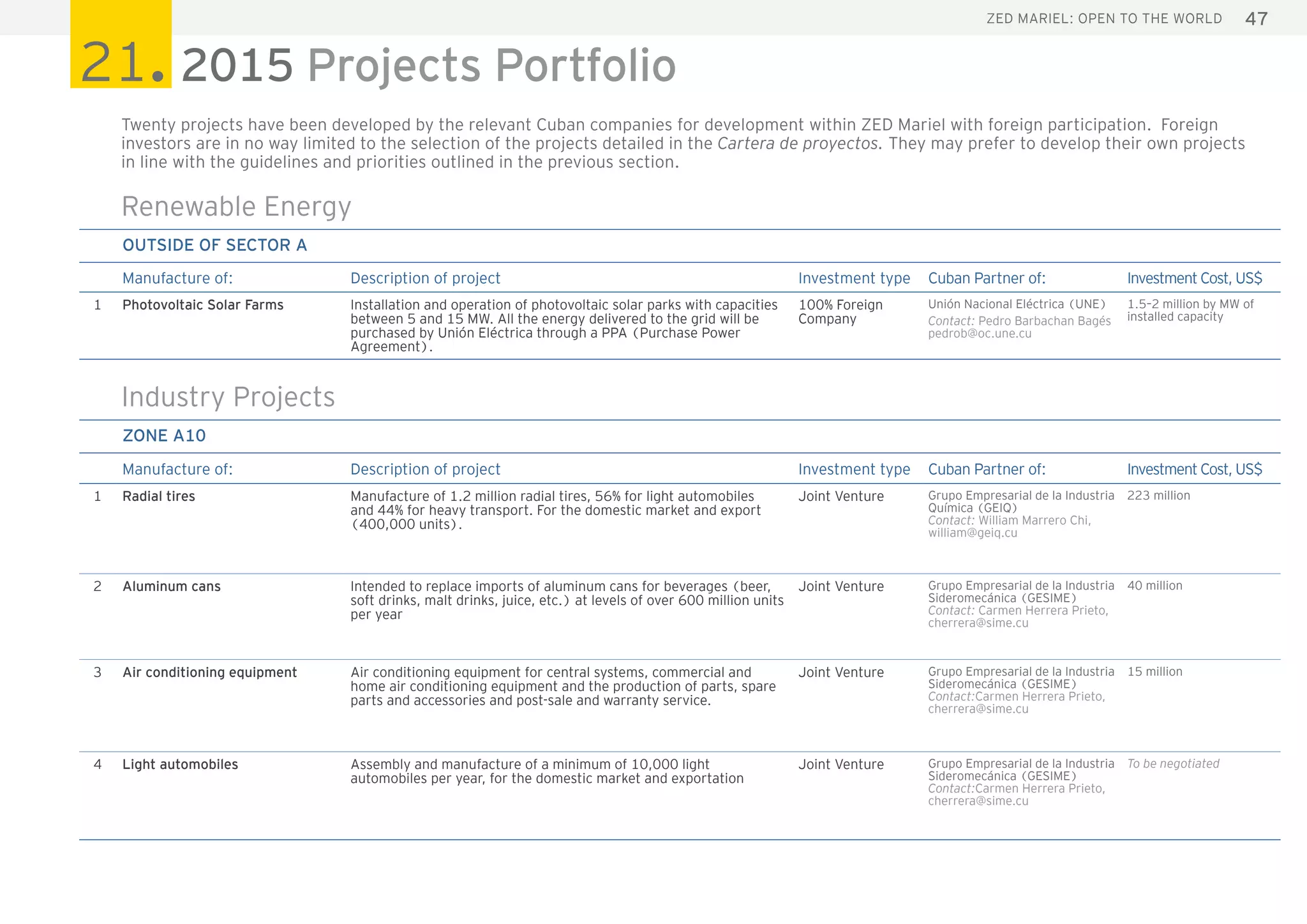


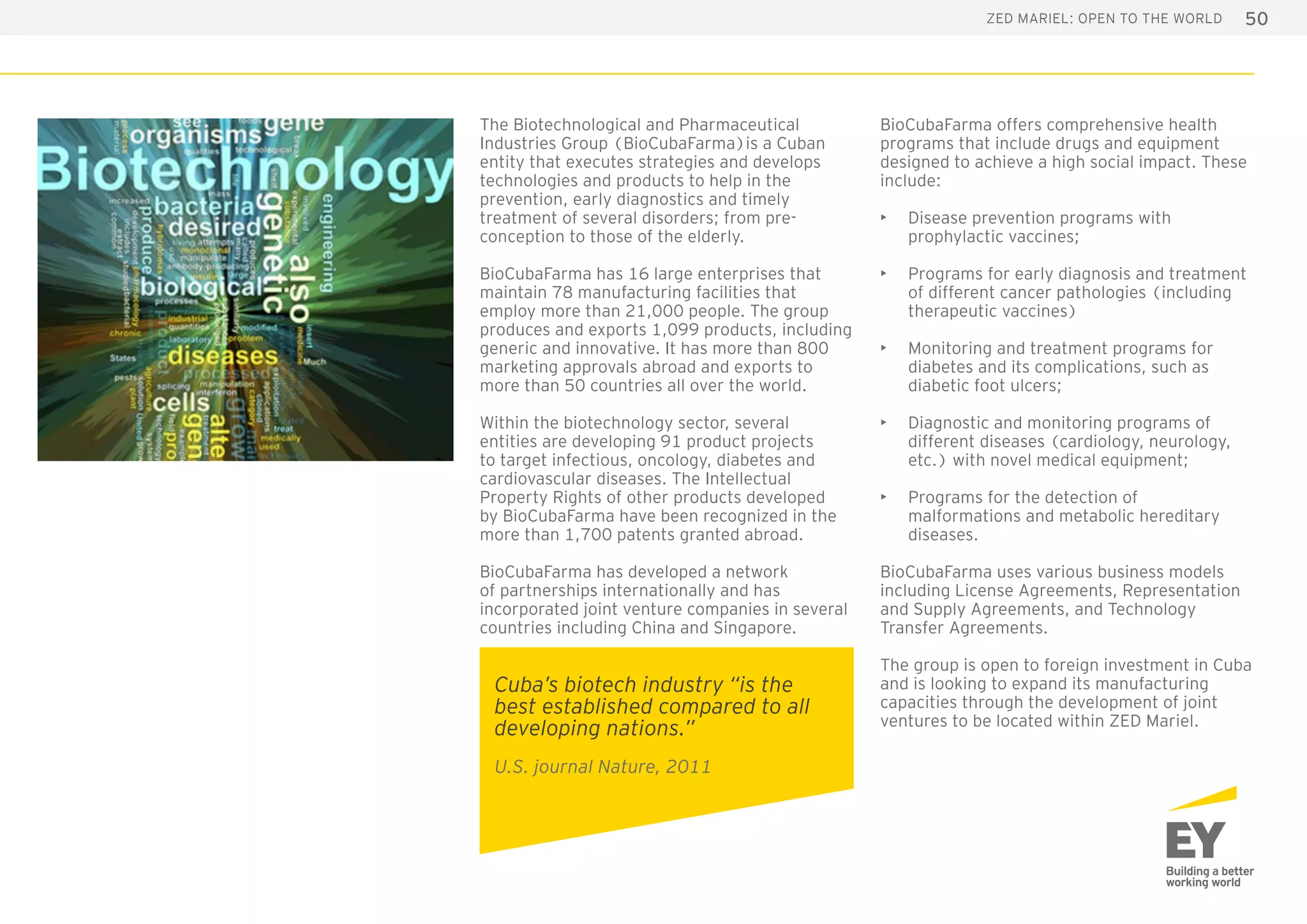

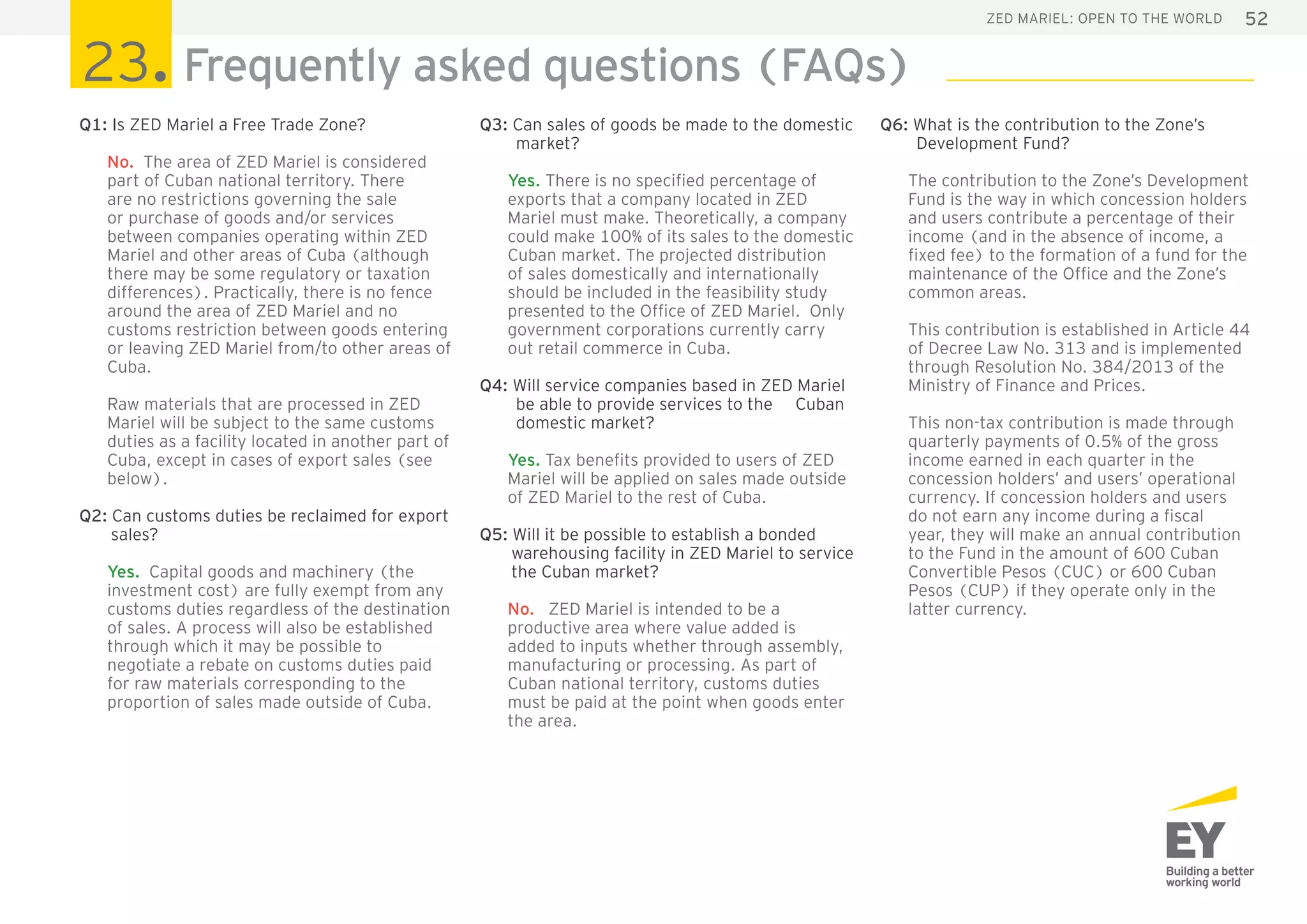
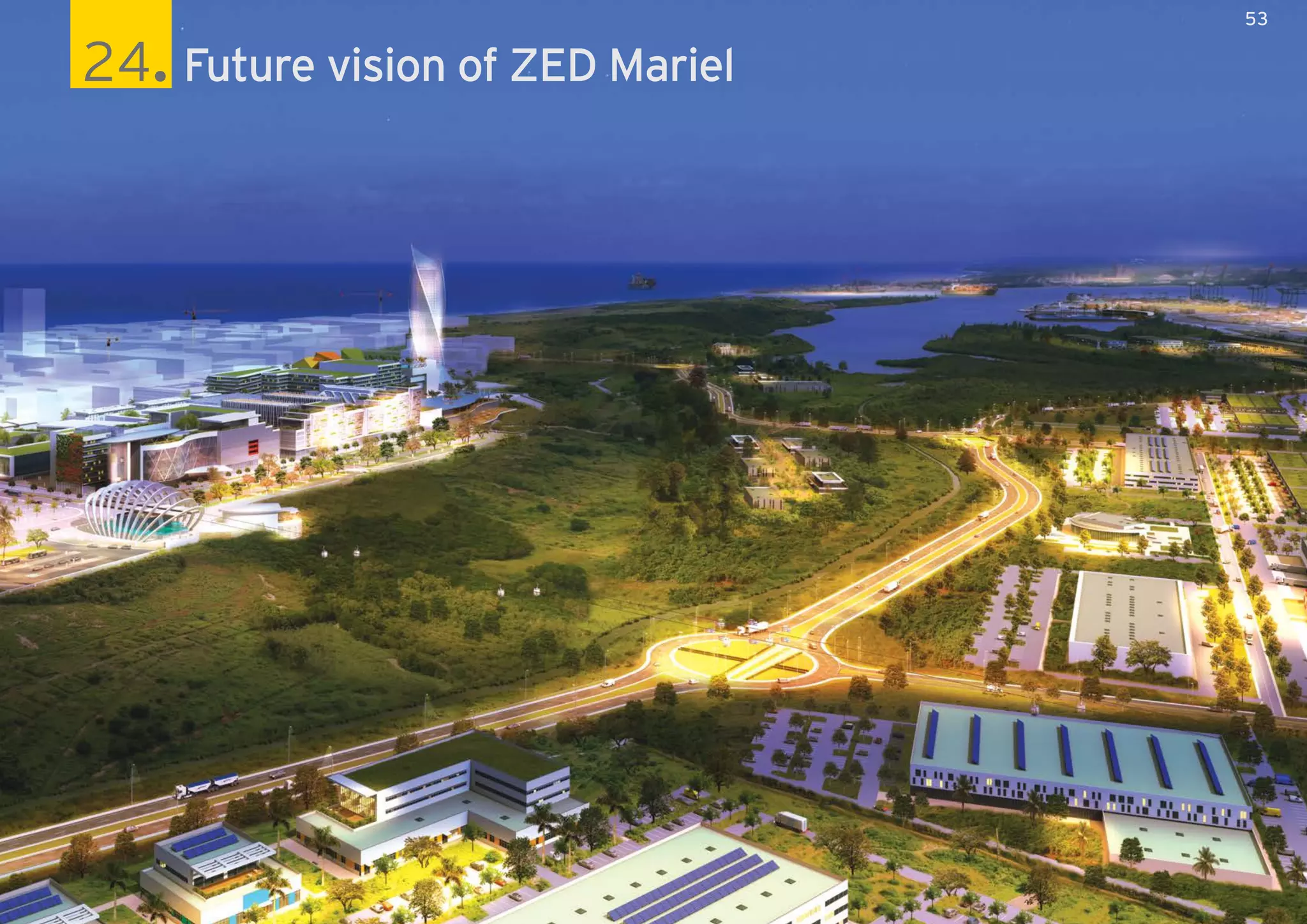


![56 ZED Mariel: open to the world
Building a better
working world for
companies doing
business in Cuba
• We have over 20 years of experience assisting clients doing business with Cuba. During this
time we have developed an extensive pool of knowledge and understanding of the Cuban
market. We have also helped many of the most prestigious Cuban state-owned entities
implement international standards and to apply best international practices.
• We maintain a strong relationship with the main Cuban audit & consulting company,
Consultores Asociados S.A. (CONAS). Working with an integrated CONAS/EY team, we are
able to prepare complementary deliverables that meet both local regulatory and international
requirements.
• We have a team of twelve experienced international staff dedicated full-time to assisting clients
with their Cuba-related business interests and an established infrastructure on the island.
• As well as maintaining the largest audit portfolio of any Big 4 firm in Cuba, we have performed
market and feasibility studies for several major new projects in Cuba, and have provided tax,
regulatory and other advice to many of the leading international companies doing business
with Cuba.
• EY Caribbean Professional Services Ltd (EY CPSL) works closely with other EY offices both
regionally and globally to ensure that our clients receive an integrated service in accordance
with EY’s Vision 2020.
Highlights
EY [Cuba]
EY Caribbean Professional Services Ltd
CONTACT DETAILS
EY Caribbean Professional Services Ltd
Miramar Trade Center.
Edificio Jerusalén.
Cuarto Piso, Oficina 412.
Miramar, Playa. La Habana, Cuba.
Tel: (+53) 7-204-4658
Matthew Pickles
Country Managing Partner
Matthew.Pickles@eycps.com
Tel: (+53) 5-268-9547
Alejandro Gago
Partner, Audit
Alejandro.Gago@eycps.com
Tel: (+53) 5-284-7300
German Matkin
Partner, Audit
German.Matzkin@eycps.com
Tel: (+53) 5-263-8115](https://image.slidesharecdn.com/ba9d78ca-2941-4ec9-a1da-caa871872d20-151224160752/75/EY-Cuba-Presentation-ZED-Mariel-Open-to-the-World-Nov-2015-56-2048.jpg)

